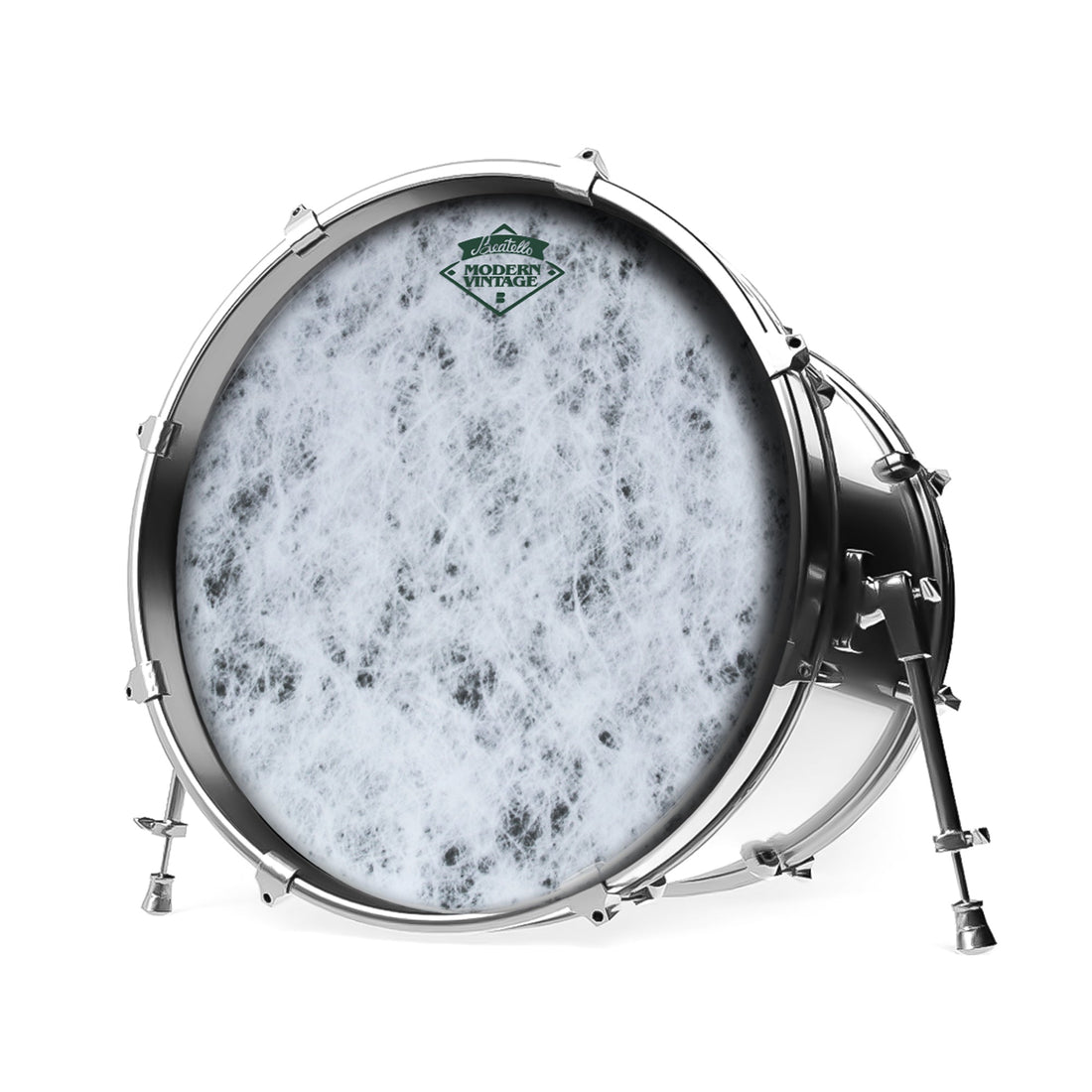A Guide to Choosing the Perfect Drum Heads

In ancient times, animal skins like goatskin or cowhide were the standard for percussion instruments. Fast forward to the modern era, and the invention of plastics revolutionized drum manufacturing. Today, most drum kits feature heads made from polyester or Mylar. The three leading brands in drum head manufacturing are Remo, Evans, and Aquarian.
Mylar Drum Head Thickness: Finding Your Sound Profile
Think of drum head thickness like guitar string gauge: thinner strings produce brighter, higher-pitched sounds, while thicker strings offer a deeper, fuller tone. The same principle applies to drum heads, measured in mil (1/1000 of an inch).
Single-Ply Batter Heads
These are the most common type for the top (playing) side of your drums.
- Common Thicknesses: 7, 7.5, 10, 12 mil
-
Thinner Heads (e.g., 7-7.5 mil):
Sound: More sensitive and responsive, offering a brighter sound with more high-frequency overtones and a crisper attack.
Durability: Less durable. -
Thicker Heads (e.g., 10-12 mil):
Sound: Deeper and fuller low-end frequencies, with more tuning range.
Durability: More durable and less prone to breaking during tuning.
Snare Resonant (Bottom) Heads
These ultra-thin heads are crucial for the snare drum's sensitivity and articulation.
- Common Thicknesses: 2-5 mil
-
Why so thin? The snare side head needs to be extremely sensitive to capture the snare wires' vibration. This allows for more high-frequency sounds and overtones, helping the snare drum cut through the mix and deliver a solid, rhythmic punch.
Double-Ply Batter Heads
Designed for durability and a focused sound, double-ply heads are essentially two layers of Mylar.
- Common Thicknesses: Two layers of 7 mil or 7.5 mil
- Sound: More durable and offer a punchier, more focused sound. They are less sensitive than single-ply heads but significantly reduce unwanted overtones.
-
Ideal for: Genres requiring more power and attack. Legendary drummers like Metallica's Lars Ulrich and Led Zeppelin's John Bonham are known for using double-ply heads to achieve their powerful sounds.
Drum Head Surface Finishes: Beyond Just Looks
The surface treatment of a drum head plays a significant role in its sound and playability.
-
Clear Drum Heads:
Also known as "oil-finished" heads, these are the most common type. They offer a bright, open sound.
-
Coated Drum Heads:
The rough, textured surface of coated heads (often white) creates a more focused and warmer sound with fewer overtones compared to clear heads. They are popular for snare drums and tom-toms. Many drummers who use brushes prefer coated heads for their unique sonic texture.
-
Black Drum Heads:
Black drum heads come in both clear and coated options. Beyond their cool aesthetic, they offer the same sonic characteristics as their non-black counterparts, allowing you to match your drum kit's style.
Special Material Drum Heads: Unique Tones and Textures
Beyond standard Mylar, some drum heads feature unique materials or treatments for specific sounds.
- Suede Drum Heads:Remo is renowned for its suede drum heads. These heads offer a focused, powerful, sensitive, and warm sound. Like coated heads, their rough surface makes them excellent for use with brushes.
- Synthetic Fiber Drum Heads (e.g., Remo Ambassador Fiberskyn):These heads are designed to mimic the feel and warm sound of traditional animal skin drum heads. Their rough surface also makes them ideal for jazz and brushwork.
- Beatello-Simulated Animal Print Drum Heads: Our Beatello-Simulated Animal Print Drum Heads fall into this category, offering a unique visual flair while providing a warm, textured sound similar to synthetic fiber heads. They're perfect for drummers looking to make a statement both visually and sonically, and their surface is also well-suited for brush playing.
- Mesh Drum Heads:
- Popularized with the rise of electronic drums, mesh heads are designed for silent practice. They produce virtually no acoustic sound when struck, making them ideal for electronic drum kits or quiet home practice where you don't want to disturb others.
The Drum Head and Drum Kit Relationship: A Harmonious Blend
Ultimately, choosing the right drum head involves understanding how its thickness, surface finish, and material influence the overall sound of your drum kit. Experimentation is key! What works for one drummer and genre might not work for another. Consider the music you play, your playing style, and the sound you're trying to achieve. Don't be afraid to mix and match different heads on your snare, toms, and bass drum to find your perfect setup.
